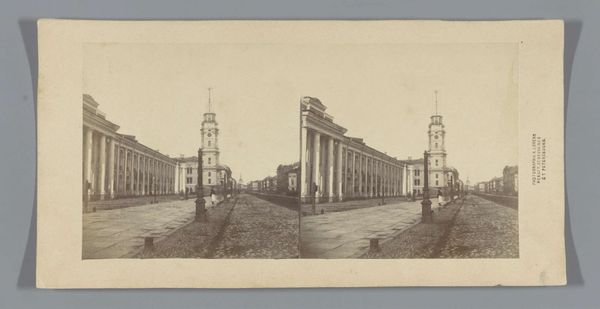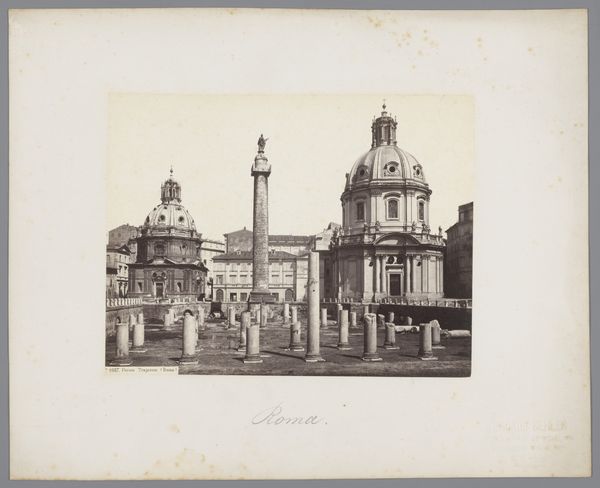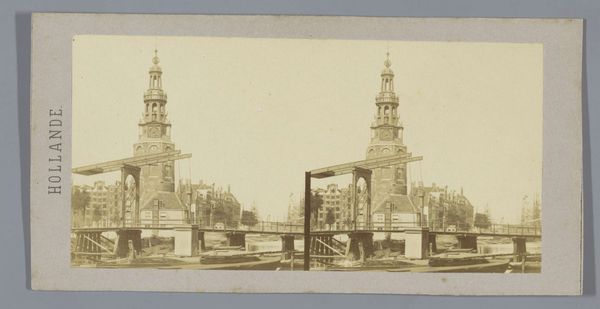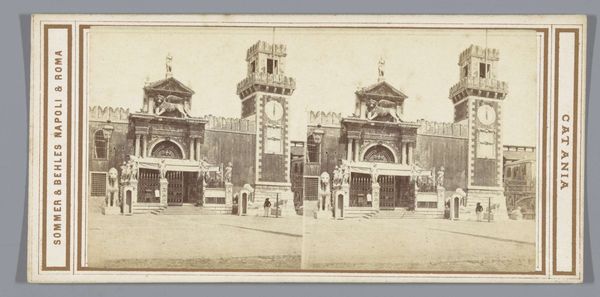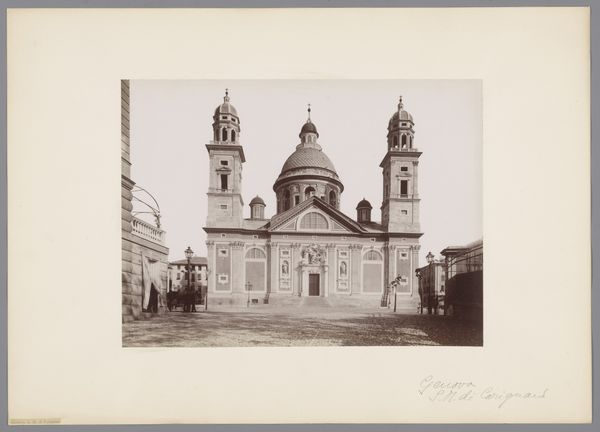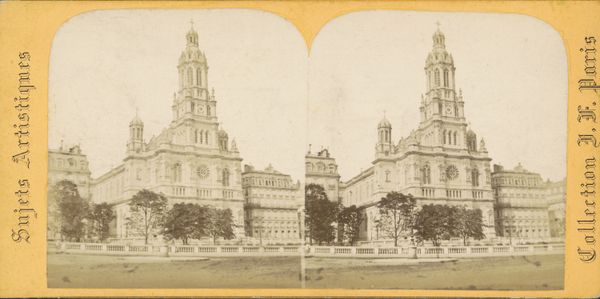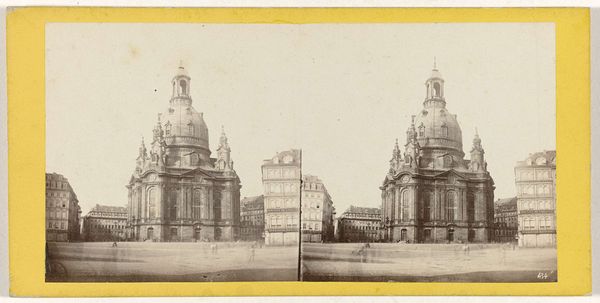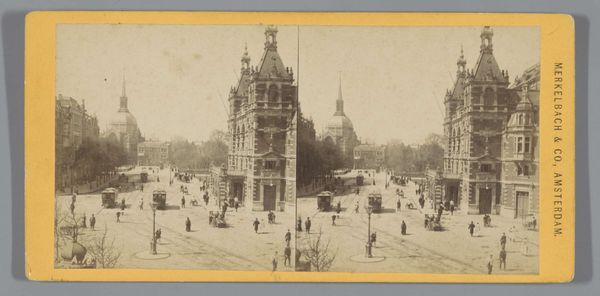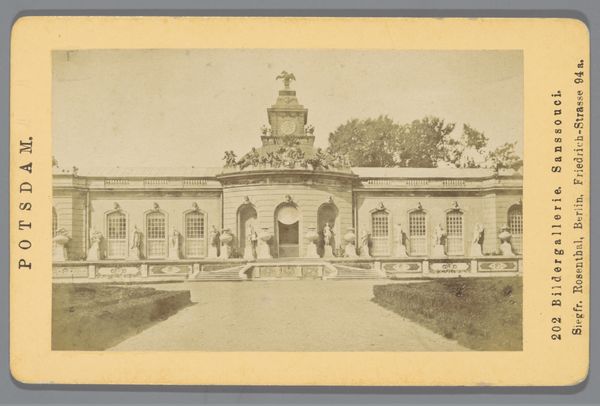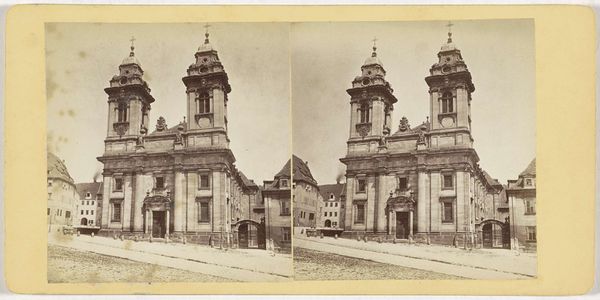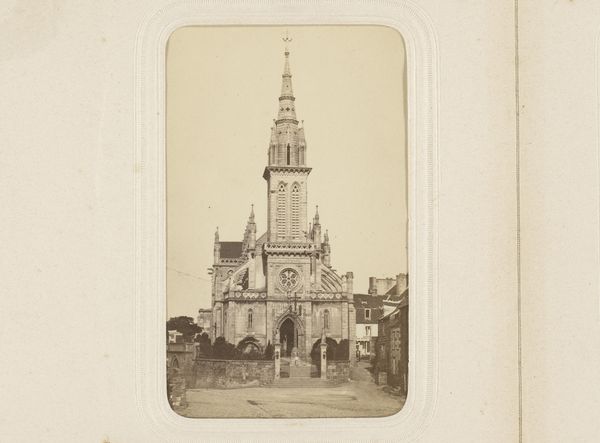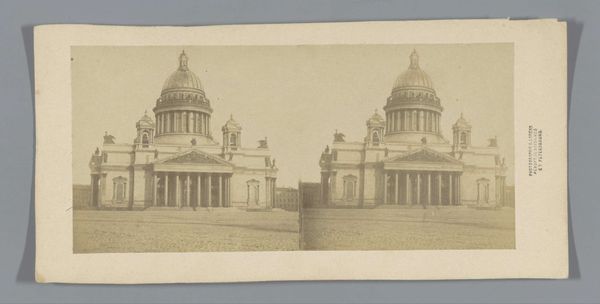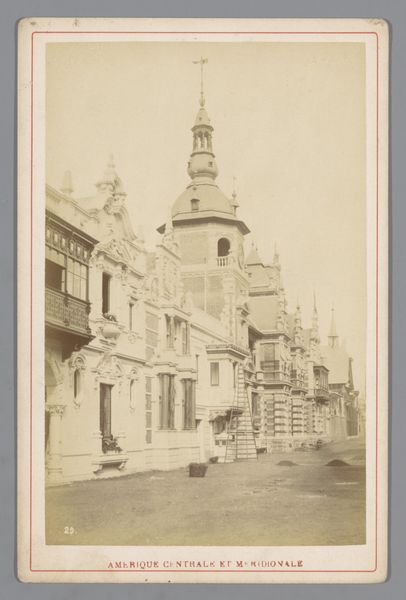![[Group of 15 Early Stereograph Views of Cambridge, England and the Surrounding Area] by Thomas Small](/_next/image?url=https%3A%2F%2Fd2w8kbdekdi1gv.cloudfront.net%2FeyJidWNrZXQiOiAiYXJ0ZXJhLWltYWdlcy1idWNrZXQiLCAia2V5IjogImFydHdvcmtzL2RkYmI2OWFkLWMzYzgtNGY4ZC04MWJjLWRlOTkxNjQzNjYwNC9kZGJiNjlhZC1jM2M4LTRmOGQtODFiYy1kZTk5MTY0MzY2MDRfZnVsbC5qcGciLCAiZWRpdHMiOiB7InJlc2l6ZSI6IHsid2lkdGgiOiAxOTIwLCAiaGVpZ2h0IjogMTkyMCwgImZpdCI6ICJpbnNpZGUifX19&w=3840&q=75)
[Group of 15 Early Stereograph Views of Cambridge, England and the Surrounding Area] 1860 - 1889
0:00
0:00
print, photography, architecture
# print
#
photography
#
ancient-mediterranean
#
arch
#
cityscape
#
architecture
Dimensions: Mounts approximately: 8.4 x 16.8 cm (3 5/16 x 6 5/8 in.) to 8.5 x 17.7 cm (3 3/8 x 6 15/16 in.)
Copyright: Public Domain
These stereograph views of Cambridge, England, were produced by Thomas Small using photographic techniques. The stereograph creates a three-dimensional effect when viewed through a stereoscope, a popular form of entertainment in the 19th century. The process involves taking two photographs of the same scene from slightly different angles, mimicking how our eyes perceive depth. These images were printed on paper, then mounted on card stock. The albumen print, derived from egg whites, gives the image its sepia tone and smooth surface. What is interesting about these images is how photography was mobilized for commercial ends. Sold as souvenirs, stereographs were a way to experience faraway places from the comfort of one’s home, indicative of the rise of tourism and a growing consumer culture. The mass production of these images speaks to the industrialized processes that were transforming society at the time. So, while these may seem like simple snapshots, they are in fact complex objects deeply embedded in the social and economic changes of the 19th century.
Comments
No comments
Be the first to comment and join the conversation on the ultimate creative platform.
